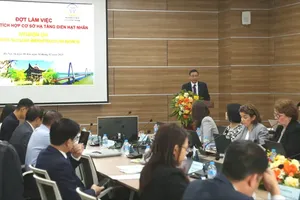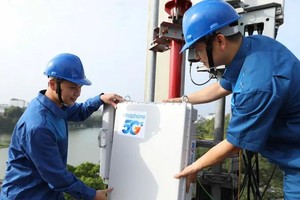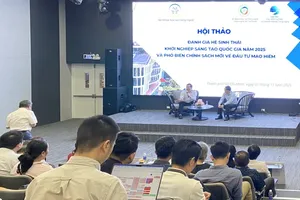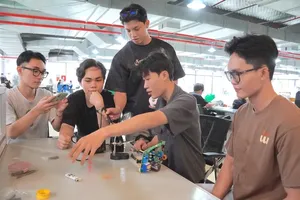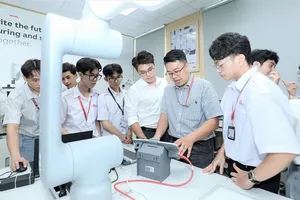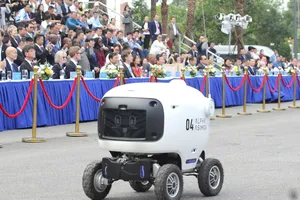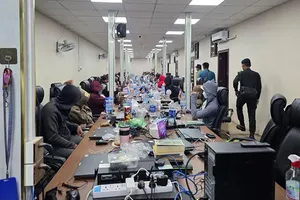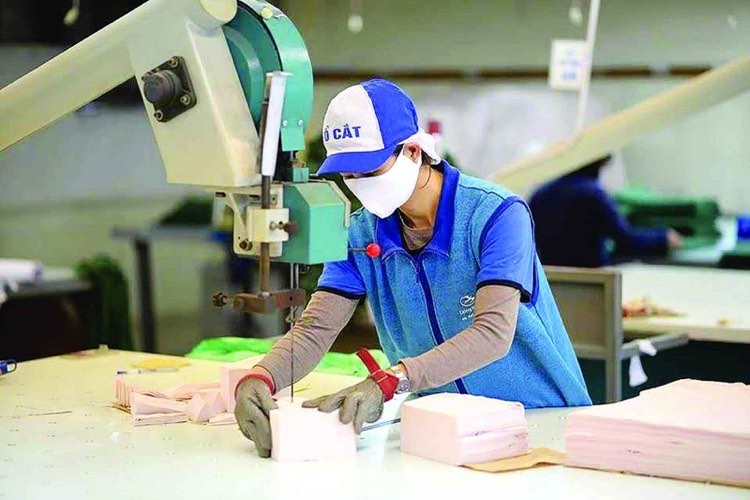 |
Workers make masks by machine at a factory under the system of Vietnam National Textile and Garment Group (Vinatex) |
The 4.0 industrial revolution optimizes productivity and reduces human workforce
The 4.0 industrial revolution era is characterized by the advanced digitalization and integration of industrial manufacturing and logistics processes. The industrial revolution 4.0 and digital transformation are in the air and it is rumored that robots, automatic lines, and digital technology will gradually replace human workers, but companies do not cut personnel.
Employees only need to report their productivity on the phone app to automatically calculate their product salary during the working day. Technology is not far from productivity and to be highly productive, human workers must learn and equip themselves with many skills.
Technological innovation and digital transformation reduce human power and increase productivity.
Take a garment enterprise - TNG Investment and Trading Joint Stock Company in the Northern Province of Thai Nguyen’s Thai Nguyen City as an example. Ms. Tran Thi Khanh Quyen, Vice President of the Company's Trade Union, said that currently, most workers in the garment industry are not affected much by the process of automation, technological chain innovation and digital transformation because manual labor is still the mainstay in the garment industry, the production system is still mainly semi-automatic.
However, the improvement and application of technology such as the improvement of the automatic stapling machines, the automatic card dispenser and stringer, the improvement of the automatic spooling machine on the programming machine, the Ultrasonic automatic leveling and labeling machine into production has greatly reduced the labor force.
Before workers were having to fold 4-5 labels together and then sew them on clothes, thanks to the application of Ultrasonic automatic labeling and labeling machine, workers presently only need to take and attach them. The machine has pre-sorted labels according to the required order number, so the time for labeling is reduced, and workers can sew more products, said Ms. Khanh Quyen. Reducing the labor force and increasing productivity should also increase wages. The average monthly income of workers in 2022 is VND 9.5 million a person and the number of garment workers is not reduced.
Meanwhile, Ms. Nguyen Thi Van from Japanese-invested Takahata Precision Vietnam Company in Nomura Industrial Park in the Northern City of Hai Phong specializing in manufacturing and assembling technical plastic components said that she has been working for the company for 12 years at the finished-product quality control department.
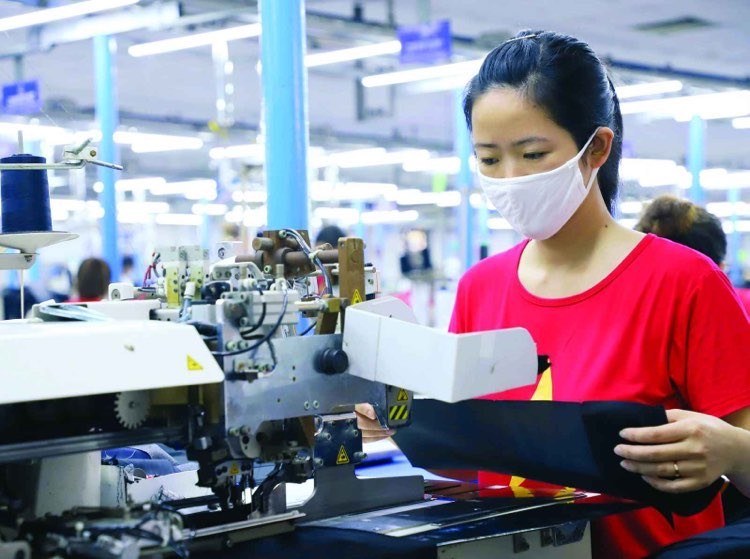 |
According to her, previously, more workers were recruited; sometimes there were more than 1,000 workers, but now, the factory only employs about 600 people stably, because many stages have been replaced by electronic equipment to ensure high precision for components. With machine inspection, one equipment operator can replace many people more accurately and productively.
In return, the income of workers will be affected, because they will not be able to work overtime or earn more money as before. When the factory purchased new digitalized assembly lines, many workers have to switch to other jobs and only those who are skilled and know how to operate new machines and equipment maintained their work.
Technological changes meant workers needed to upskill on digital transformation
Ms. Nguyen Thi Kieu Giang, Head of the Vietnam National Textile and Garment Group (Vinatex)’s Communication Department, and representatives of many enterprises in textile, garment, leather and footwear, and seafood said that in the next 10 years, the industrial revolution 4.0 will not have much impact on the employment of workers.
However, businesses must stay with the current technological and digitalized trend. In the immediate future, businesses in the Vinatex group are focusing on digital transformation and finding markets and orders to create more jobs for workers.
Meanwhile, Chairman of Vinatex Le Tien Truong affirmed that the group's steadfast goal is digital transformation and automation because this will be the future trend of members in the global supply chain.
At the same time, group members will take heed of human resource development to meet the requirements of green production, and digital economy and participate in the global supply chain, building a complete supply chain from yarn to final garment products for partners.
According to many experts, there will be no significant changes for garment and textile workers in the next 10 years, but there will be big changes in the distant future. Many new job positions associated with 4.0 technology will arise giving more opportunities for workers with intermediate and higher skills, manual laborers will find it hard to have a job.
Therefore, employees must be proactive to upskill themselves so that they can adapt to new conditions. For example, high-tech human resources in the garment industry must know how to use smart production technology such as designing sewing lines using digital technology, designing patterns using 3D technology, intelligent quality control, and operating sewing lines using digital technology, concluded Mr. Le Nho Thuong, former Chairman of the Vietnam Textile and Garment Trade Union.

